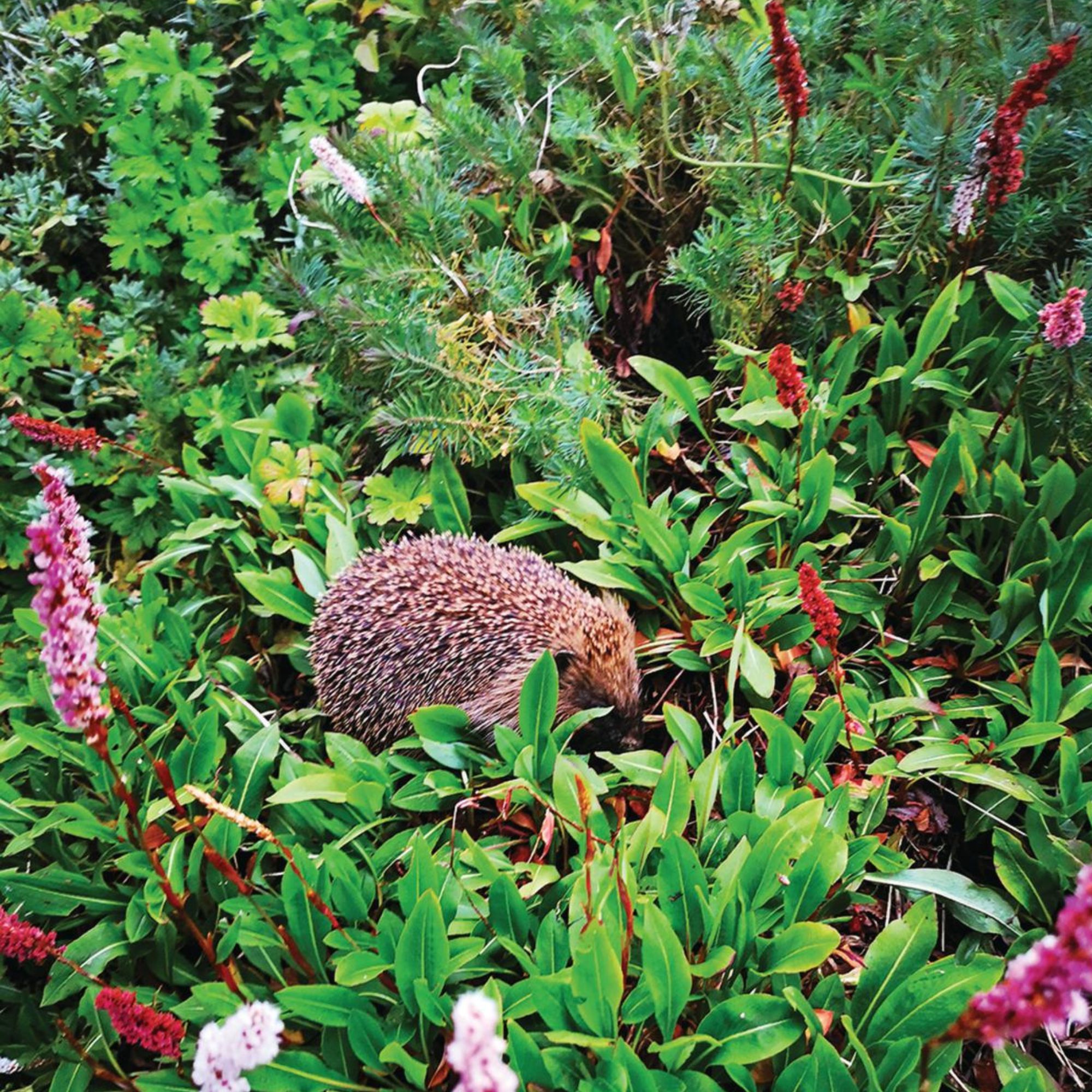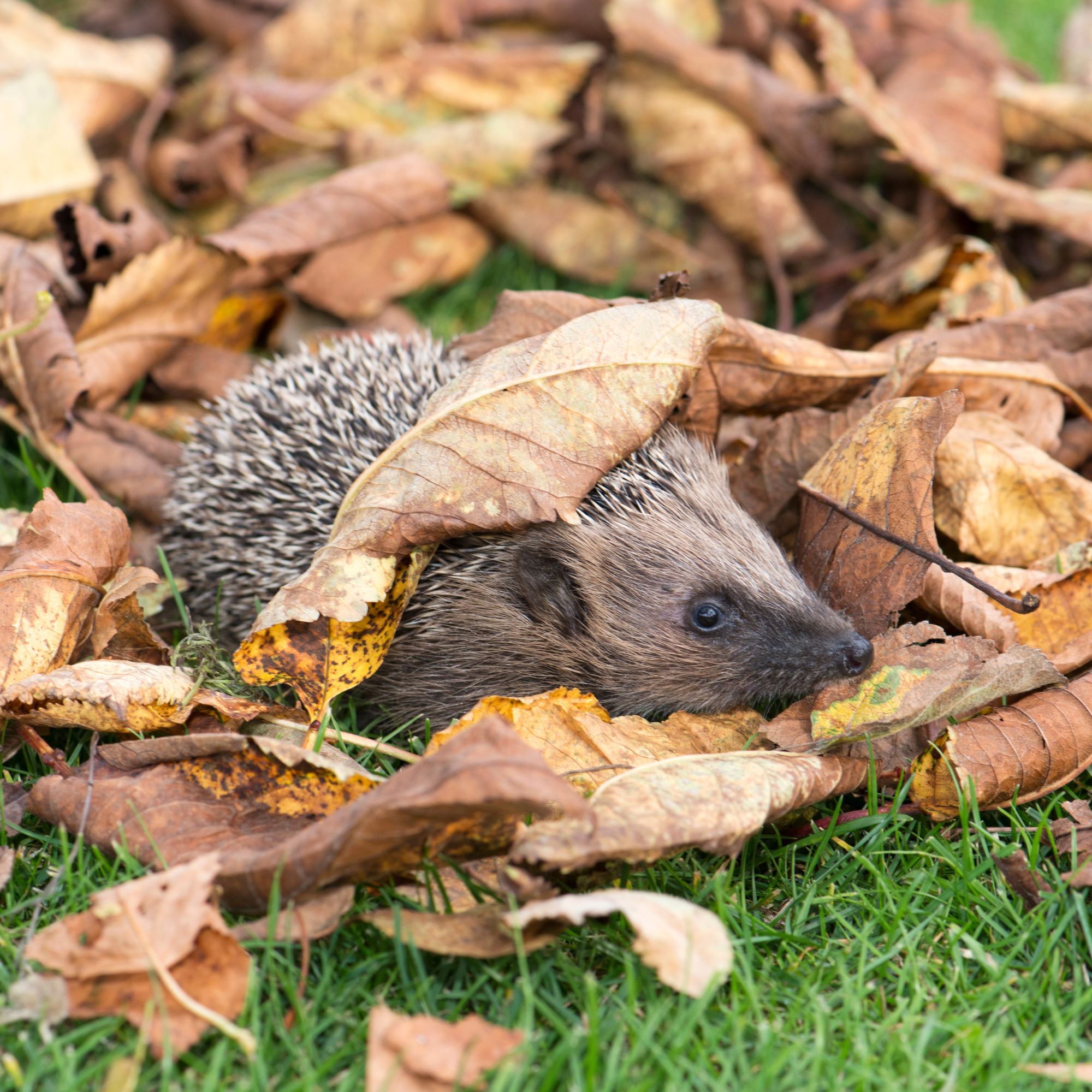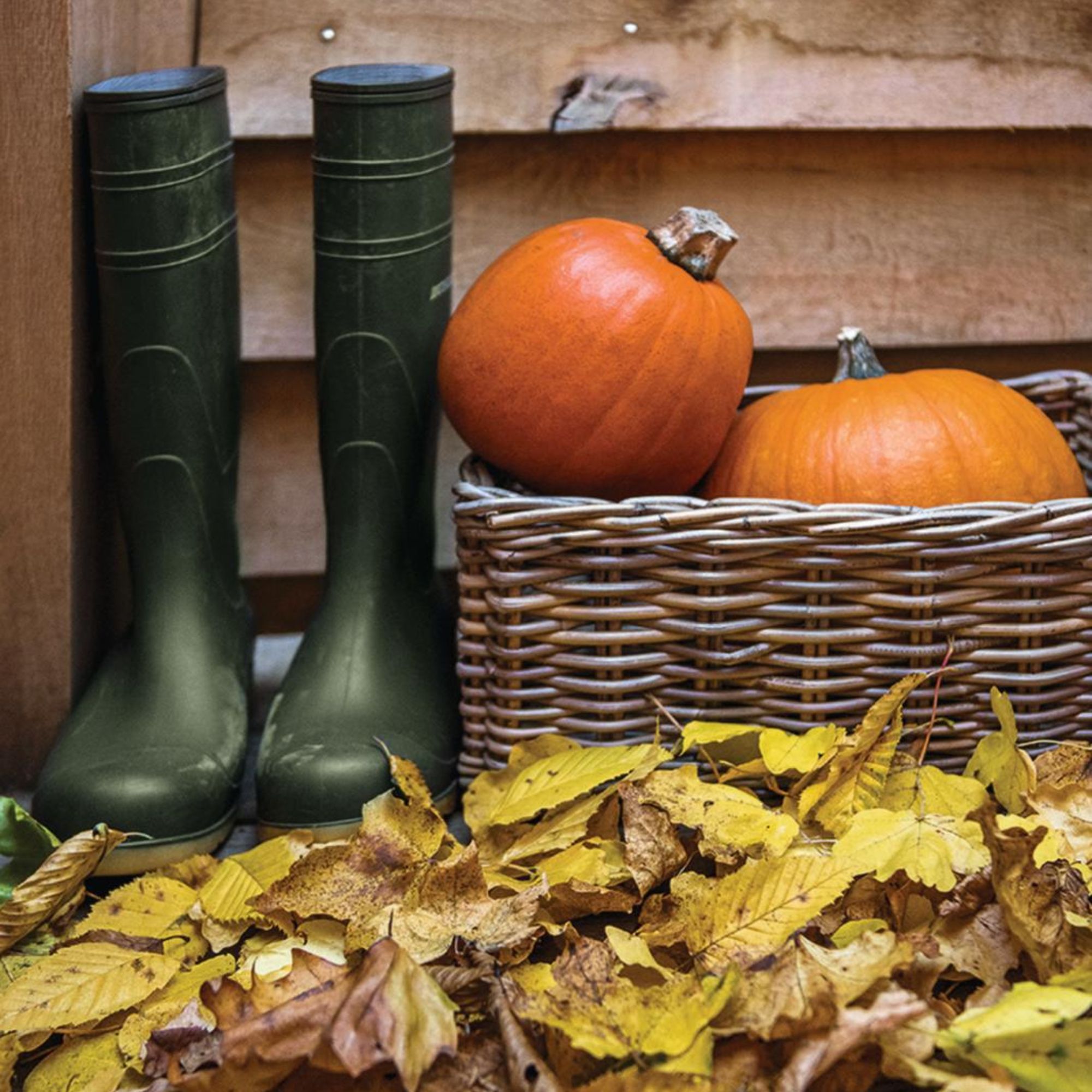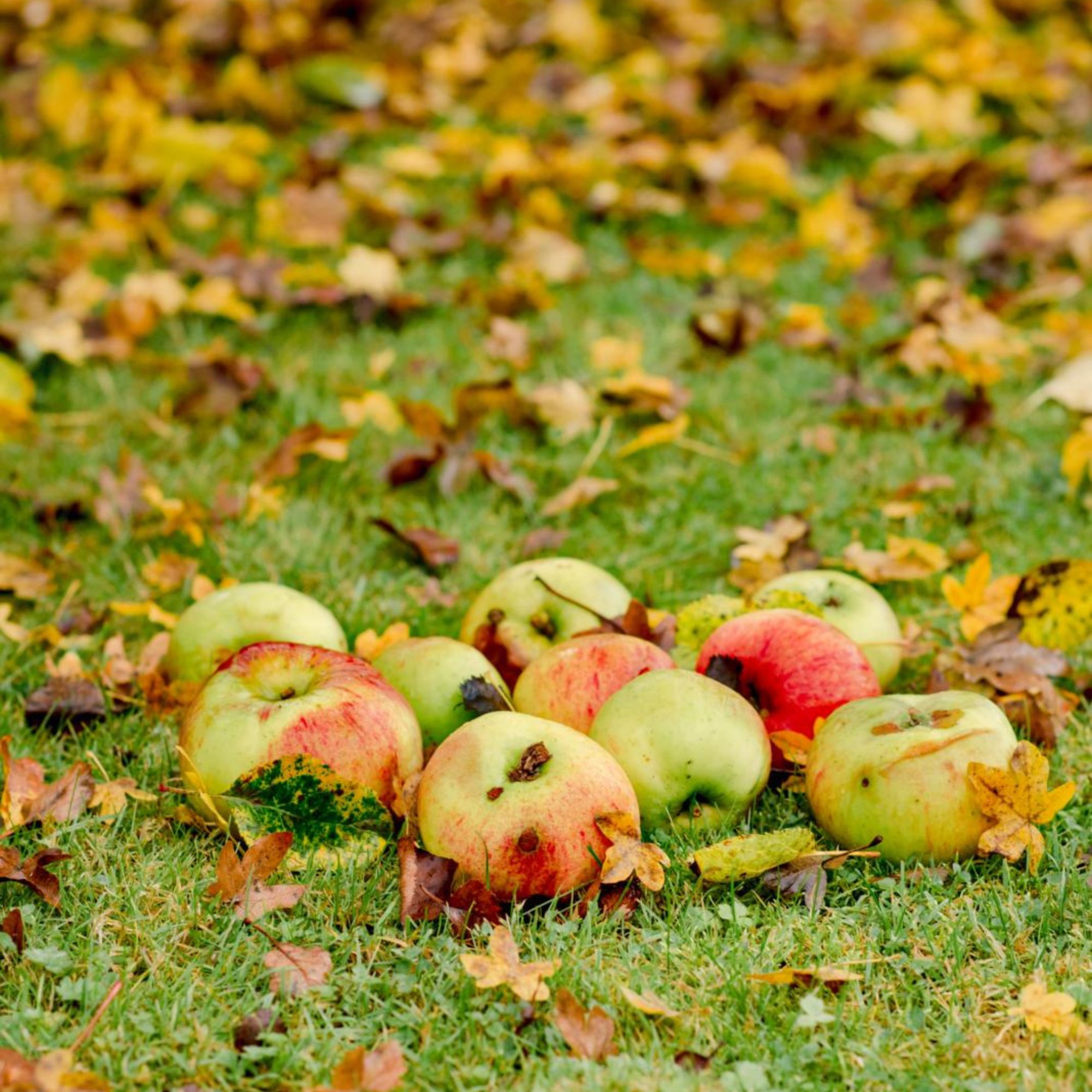
Animal lovers, it's a good idea to learn how to make your garden more hedgehog-friendly – especially now that temperatures are dropping.
Hedgehogs might be nocturnal, and they might only come out at night, but that's no reason not to embrace our list of gorgeous wildlife garden ideas.
Why? Well, because you might just help a spiky (and very cute) critter make it through the winter, as well as add £30K to your house's value. We guess it really does pay to be kind...
How to make your garden more hedgehog-friendly
If you've been busily trying to figure out how to make your garden more hedgehog-friendly, you're not alone: plenty have been prompted to jump on this garden trend after a recent warning issued by Hedgehog Rescue Blackpool.
'As the temperature has dropped it's more likely you will see sick hedgehogs who are struggling to survive and just about making it through, beginning to lose the battle and come out in the day time,' reads the Facebook post.
'They come out because they are dying, and hypothermia is a stage of the process. It makes them feel cold, so they come out in the day to get the sun's heat. It's an emergency.'

The post goes on to add that hedgehogs found wandering around in the daytime should be brought indoors, placed in a box with a hot water bottle, and covered with fleece and lots of scrunched-up kitchen roll.
'Put in a dish of water then leave the box in a quiet, well-lit room, and start ringing the rescues immediately,' it finishes.
Thankfully, there are plenty of ways to help prevent things from getting to this stage – and it all begins with learning how to make your garden more hedgehog-friendly.
Buy a hedgehog house:
Transforming your garden into a hedgehog haven needn't take lots of time and effort, but doing so could have an overwhelmingly positive impact on the rapidly declining species.
'Amidst the alarming decline of hedgehog populations in the UK, from 1.5 million in 1995 to fewer than 500,000 today, hedgehog-friendly gardens have never been more important,' says Vicki Hird, Strategic Lead on Agriculture at The Wildlife Trusts.
'Imagine your garden as part of a vital wildlife corridor, allowing hedgehogs to move freely. Whether you're in the city or countryside, offering food, water, and shelter helps hedgehogs thrive.'
Vicki adds that 'everyone can help to protect and preserve this charismatic species by providing them with spaces to nest, such as a hedgehog house, or even a log pile, or compost heap.'

Adrian Thomas, Wildlife Gardener for the RSPB, has also dropped a few ideas on how to make your garden more hedgehog-friendly.
1. Create a hedgehog highway
'Hedgehogs can roam up to one mile in a single evening – an impressive distance on such little legs!' says Adrian.
'Help them out by creating small gaps or holes in fences, walls or bushes to allow them to move through your garden freely. A hedgehog-sized hole should be at least 13cm x 13cm and should be located low down, near the ground.'
2. Provide plenty of hiding places

If you're wondering how to make your garden more hedgehog-friendly, Adrian reminds us that 'hedgehogs love foraging amongst fallen leaves and twigs, so try to leave your garden a little wild and unkempt'.
'Instead of binning all of your garden waste, create small hog-friendly mounds of sticks and twigs,' he says, noting that these will provide shelter and help to attract insects – a vital source of food for hedgehogs.
3. Avoid pesticides and herbicides
'Slug pellets and weed killers can prove deadly to our prickly pals – as well as their primary food sources; slugs and snails – so keep them out of your garden,' says Adrian.
'Wood preservers should also be avoided too, as hedgehogs love to lick freshly treated fences. Why? We’re not quite sure, but it’s worth bearing in mind.'
4. Supplement their diet

Still learning how to make your garden more hedgehog-friendly? One of the easiest ways is to offer them a snack.
'Hedgehogs need to fatten up before hibernation,' says Adrian. 'You can leave out dishes of wet cat or dog food, meat-based cat biscuits, or specialised hedgehog food to supplement their diet.'
It's worth tucking this away somewhere that only hedgehogs can get to, especially if you're trying to suss out how to stop foxes pooing in your garden.
5. Check for hidden hedgehogs
Before using garden equipment like lawnmowers or strimmers, check for hidden hedgehogs in tall grass or under bushes.
Adrian adds that, tragically, 'Bonfire Night is also one of the most dangerous times for hedgehogs, with seemingly safe unlit bonfires turning into a drastic danger for local hogs. This is especially shocking when you learn that many hedgehogs have a second litter in the autumn!'
Always, then, check your bonfire before you set light to it.
6. Remove hazards

On the hunt for yet more ways to make your garden more hedgehog-friendly?
'Clear your garden of any potential hazards like netting, plastic, or other litter that hedgehogs might get entangled in,' says Adrian.
'If you’ve got a pond, be sure to modify it by placing a series of small steps, too. This way, if a hedgehog falls in, they’ll have a better chance of clambering back out.'
FAQs:
How do you make a wild hedgehog feel safe?
If you find a hedgehog in the daytime and need to warm it up before an animal rescue charity can take over, put it into a cardboard box lined with kitchen roll and/or a fleecey material. You can also offer them a teatowel to hide under, and it's a good idea to pop a hot water bottle in there, too.
Be sure to provide them with a dish of water, and leave the box in a quiet and well-lit room while you wait for help.
What to do if you find a hedgehog in your garden at night?
While a hedgehog out in the daytime is a cause for emergency, the same is not true of hedgehogs who wander your garden at night: if you spot one, and it looks healthy, then the best thing you can do is leave it alone.
Are hedgehogs good to have in your garden?
Anyone who has ever lamented over the best way to get rid of slugs will undoubtedly want to welcome hedgehogs into their garden with open arms; these spiky critters are a brilliant form of natural pest control!
How do you encourage a hedgehog to use a hedgehog house?
Whether you've bought or built your hedgehog house from scratch, the RSPB has a few tips on how to make yours more welcoming for hedgehogs in your garden:
1. Fill the hideout with dry leaves, straw or hay to provide a cosy (and, more importantly, warm) bed for any prospective hedgehog tenants
2. Place the hedgehog house somewhere level and stable, so it doesn't collapse or shift during hibernation, and in a spot that's quiet and secluded. Avoid placing it near steep slopes or obstacles that might hinder a hedgehog's entry or exit.
3. Place a little food and water by the entrance, to encourage hedgehogs to pop in and settle down
4. Make sure it's sheltered from the elements (so that means away from strong winds and direct sunlight)
Remember, 'hedgehogs hibernate during the cooler months, usually from November to April,' says Adrian.
'Giving hedgehogs somewhere to nest is one of the best ways to support the species.'
So, if you're looking for just one thing that will help you make your garden more hedgehog-friendly, it's that: a nice little den or house, positioned somewhere to help them get some much-needed shut-eye over the winter months.
Good luck!







